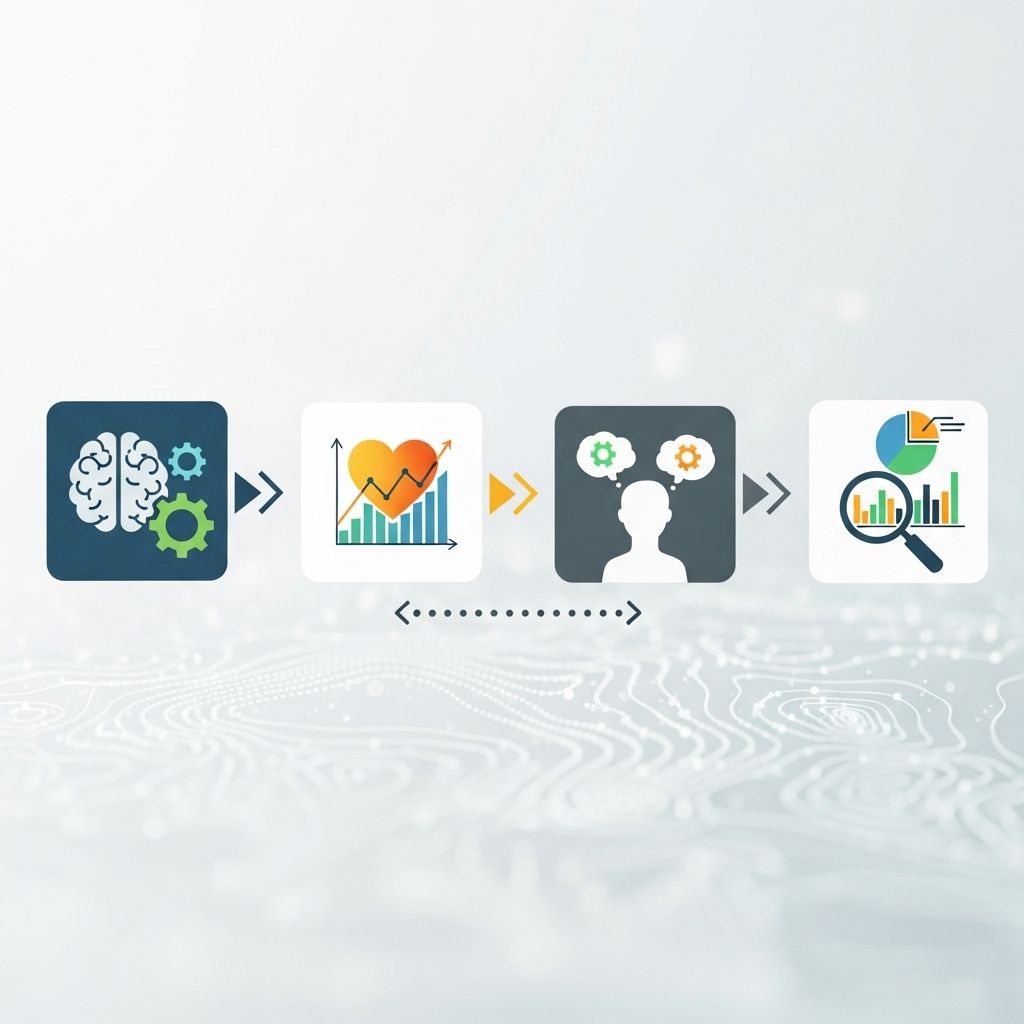Utilizing Mood Data to Develop an Emotional Toolkit
Recognizing feeling trends helps you stay composed and foster deeper relationships.

Introduction to Emotional Intelligence and Mood Data
Emotional intelligence (EQ) is the ability to recognize and manage emotions in oneself and others, playing a crucial role in personal and professional success. Recently, innovations in technology have made it possible to analyze mood data, providing insights that can be used to develop an emotional toolkit. This toolkit can help individuals navigate complex emotional situations effectively.
Understanding Emotional Intelligence
Emotional intelligence, popularized by Daniel Goleman, involves four key domains:
self-awareness
,self-management
,social awareness
, andrelationship management
. These domains are essential for understanding and managing emotions, both personally and interpersonally. Another model, the Six Seconds Model, focuses on three core pursuits: Know Yourself, Choose Yourself, and Give Yourself, which help individuals develop emotional intelligence through practical means. Emotional intelligence is also conceptualized through different models, including ability, trait, and mixed models, each offering unique perspectives on how EI functions.Ability Model
The ability model, developed by Mayer and Salovey, views EI as an innate intelligence comprising skills such as perceiving, expressing, facilitating thought with emotions, and managing emotions.
Trait Model
The trait model, proposed by Petrides and Furnham, defines EI as a persistent behavior pattern or personality trait, which includes dimensions like well-being and sociability.
Mixed Model
Goleman’s mixed model combines aspects of both ability and trait models, emphasizing competencies such as recognizing and managing emotions, self-motivation, and relationship management.
Mood Data: A Key to Unlocking Emotional Intelligence
Mood data refers to the collection and analysis of emotional states to better understand and manage emotions. This data can be gathered through various methods, including surveys, wearable devices, and AI-powered tools that analyze facial expressions or speech patterns.
Creating an Emotional Toolkit
An emotional toolkit is a set of strategies and techniques designed to enhance emotional regulation and intelligence. By leveraging mood data, individuals can develop personalized tools tailored to their emotional needs.
Steps to Develop an Emotional Toolkit Using Mood Data:
– Collect Mood Data: Use journals, apps, or wearable devices to track emotional states over time.- Analyze Patterns: Identify recurring emotional patterns and triggers using data analysis tools.- Develop Strategies: Create personalized strategies for managing emotions based on the data analyzed.- Implement and Refine: Practice these strategies regularly and refine them as needed.
Benefits of an Emotional Toolkit
An emotional toolkit offers several benefits, including enhanced self-awareness, better relationship management, and improved decision-making. By understanding and managing emotions effectively, individuals can navigate complex situations more successfully.
Implementing Mood Data in Various Settings
Mood data can be utilized in various contexts, such as workplaces, schools, and personal relationships. For instance, in a workplace setting, understanding the emotional state of employees can help leaders manage conflicts and improve teamwork.
Frequently Asked Questions (FAQs)
Q: What is the primary goal of using mood data in emotional intelligence?
A: The primary goal is to develop personalized strategies for managing emotions and enhancing self-awareness.
Q: How can I start collecting mood data?
A: Start by using journals or apps designed for mood tracking. Wearable devices and AI tools can also provide valuable insights.
Q: What are the key models of emotional intelligence?
A: The main models include the ability model, trait model, and mixed models, each offering different perspectives on how EI functions.
Conclusion
Utilizing mood data to create an emotional toolkit is a powerful way to enhance emotional intelligence and improve personal and professional interactions. By understanding and managing emotions more effectively, individuals can foster better relationships and make more informed decisions. This approach not only benefits individuals but also contributes to a more empathetic and cohesive society.
References
- https://www.uniphore.com/blog/the-4-domains-of-emotional-intelligence/
- https://www.6seconds.org/emotional-intelligence/
- https://pmc.ncbi.nlm.nih.gov/articles/PMC8701889/
- https://mhanational.org/learning-hub/what-is-emotional-intelligence-and-how-does-it-apply-to-the-workplace/
- https://news.harvard.edu/gazette/story/2025/08/what-is-emotional-intelligence-and-why-is-it-crucial-in-the-workplace/
- https://positivepsychology.com/emotional-intelligence-theories/
- https://www.psychologytoday.com/us/basics/emotional-intelligence
- https://online.hbs.edu/blog/post/emotional-intelligence-in-leadership
Read full bio of medha deb












